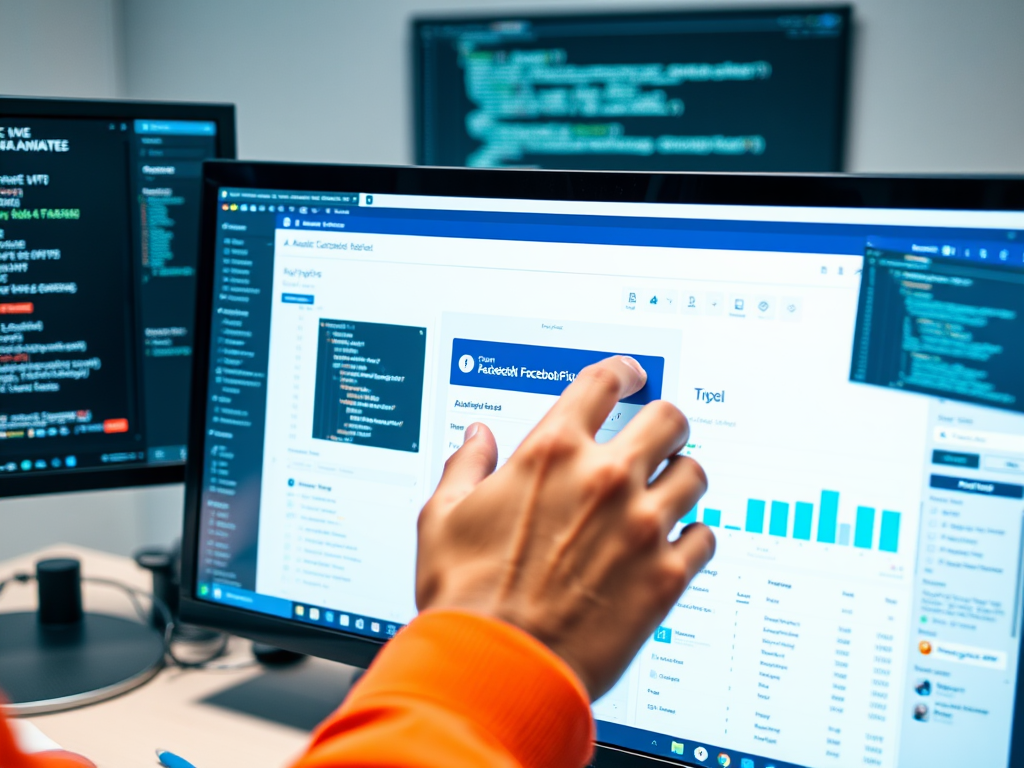In the digital marketing landscape, tracking user interactions has become a cornerstone of effective advertising strategies. Facebook Pixel serves as an indispensable tool for businesses looking to harness data-driven approaches. By leveraging this powerful code snippet, marketers can glean insights about user behavior on their websites, allowing for more tailored advertising experiences. Imagine being able to pinpoint exactly how users engage with your content and seamlessly utilize that information to enhance your marketing efforts. The relevance of Facebook Pixel extends beyond simple analytics; it holds the potential to revolutionize how businesses connect with their audience. This article will guide you through the nitty-gritty of setting up and optimizing Facebook Pixel for your marketing campaigns, ensuring you unlock its full potential.
What is Facebook Pixel?

Facebook Pixel is a piece of JavaScript code that can be embedded in your website. It efficiently collects data on user activity, providing invaluable insights for advertisers. By tracking various actions, such as page views and purchases, this tool allows marketers to analyze consumer behavior comprehensively. Not only does it streamline conversion tracking, but it also enables retargeting campaigns to effectively reach visitors who have already shown an interest in your offerings. This powerful tool isn’t just about data collection; it’s about transforming that data into actionable insights that drive results. Understanding what Facebook Pixel can do is the first step toward leveraging its capabilities for your business needs.
Why Use Facebook Pixel?

The benefits of using Facebook Pixel are vast and multifaceted. Here are several critical impacts it can have on your advertising campaigns:
- Enhanced Targeting: Reach specific audiences based on their previous interactions with your website.
- Conversion Tracking: Measure the effectiveness of your ads in real-time, allowing for quick adjustments.
- Retargeting Opportunities: Bring back visitors who didn’t convert, reminding them of your products or services.
- Lookalike Audiences: Create new audiences that share similar characteristics with your existing customers.
How to Set Up Facebook Pixel
Setting up Facebook Pixel is a straightforward process, requiring just a few simple steps to integrate with your website.
Step 1: Create Your Facebook Pixel
To start, head over to the Facebook Events Manager. Follow the prompts provided to create a new pixel and give it a memorable name that represents your business objectives.
Step 2: Add Pixel Code to Your Website
After creating your pixel, you’ll receive a piece of JavaScript code. Copy this code and paste it into the header section of your website. Depending on the platform you use (like WordPress, Shopify, or custom HTML), the way you add this code might differ. This step is crucial as it enables Facebook to track activities on your site. For those unfamiliar with coding, many website building platforms offer straightforward guides to integrate the pixel easily.
Step 3: Verify Your Pixel Installation
After installation, it’s essential to ensure that everything is working correctly. Use the Facebook Pixel Helper tool, a Chrome extension, that checks if your pixel is functioning properly. If installed correctly, this tool will inform you about any errors or warnings, allowing you to make necessary adjustments.
Now that you have set up your Facebook Pixel, you can configure specific events to track more granular actions users take on your site. Below is a table to summarize the types of standard events you can track:
| Event Name | Description |
|---|---|
| Page View | Tracks when a page is viewed on your website. |
| Add to Cart | Tracks when a user adds an item to their shopping cart. |
| Purchase | Tracks when a purchase is made, providing information on the total value. |
Configuring Events and Custom Conversions
Configuring your Facebook Pixel to track events tailored to your business goals is vital for maximizing its effectiveness. Standard events provide an excellent starting point, but creating custom conversions can elevate your operations even further. Standard events are predefined actions you can track that cover a range of common customer interactions. Examples include purchases, completed registrations, and more.
What Are Standard Events?
Standard events are pre-formulated actions recognized by Facebook. Their predefined nature makes implementation much more accessible since Facebook understands these events and how to optimize for them. By correctly setting them up, you’ll establish a robust data foundation from which to enhance your advertising campaigns. You can find a complete list of standard events in the Facebook developer documentation that outlines their specific attributes.
How to Set Up Custom Events
If your business model involves unique interactions, you have the flexibility to create custom events. Doing so requires you to add additional snippets of code to your website to reflect these unique actions. Custom events allow you to tailor the tracking process further, ensuring that every important action is monitored.
Best Practices for Using Facebook Pixel
To maximize your Facebook Pixel’s potential, adhering to best practices is essential. Implementing these methods will significantly enhance your advertising strategy and revenue:
- Regularly Update Your Pixel: Ensure your pixel code is current to benefit from Facebook’s latest features.
- Segment Your Audiences: Use the data collected to create audience segments, allowing for more targeted advertising based on user behavior.
- A/B Testing: Test various ad creatives and audience segments to determine what performs best, continually optimizing your strategy.
Conclusion
Utilizing Facebook Pixel is not simply an option; it’s a necessity for those looking to enhance their online marketing efforts. The capacity to monitor user behavior and leverage that information to craft targeted ads leads to improved engagement and higher conversion rates. By following the outlined steps and adhering to best practices, you’ll be well-equipped to navigate the complexities of Facebook advertising. As you dive deeper into utilizing Facebook Pixel, remember that consistency and experimentation will ultimately yield the best results for your marketing goals.
Frequently Asked Questions
- What is the main purpose of Facebook Pixel?
Facebook Pixel allows businesses to track user interactions on their site and improve ad targeting strategies. - Is Facebook Pixel free to use?
Yes, Facebook Pixel is a free tool provided by Facebook to help optimize advertising efforts. - Do I need coding knowledge to set up Facebook Pixel?
While basic coding knowledge can help, many platforms provide user-friendly methods to add the pixel without extensive coding skills. - Can I use Facebook Pixel if I have an eCommerce store?
Absolutely! Facebook Pixel is particularly beneficial for eCommerce stores as it provides insights into user behavior and conversion tracking. - How long does it take for Facebook Pixel to start showing data?
Typically, data collection starts immediately after installation, but it may take a few days for analytics to stabilize and provide insightful reports.
